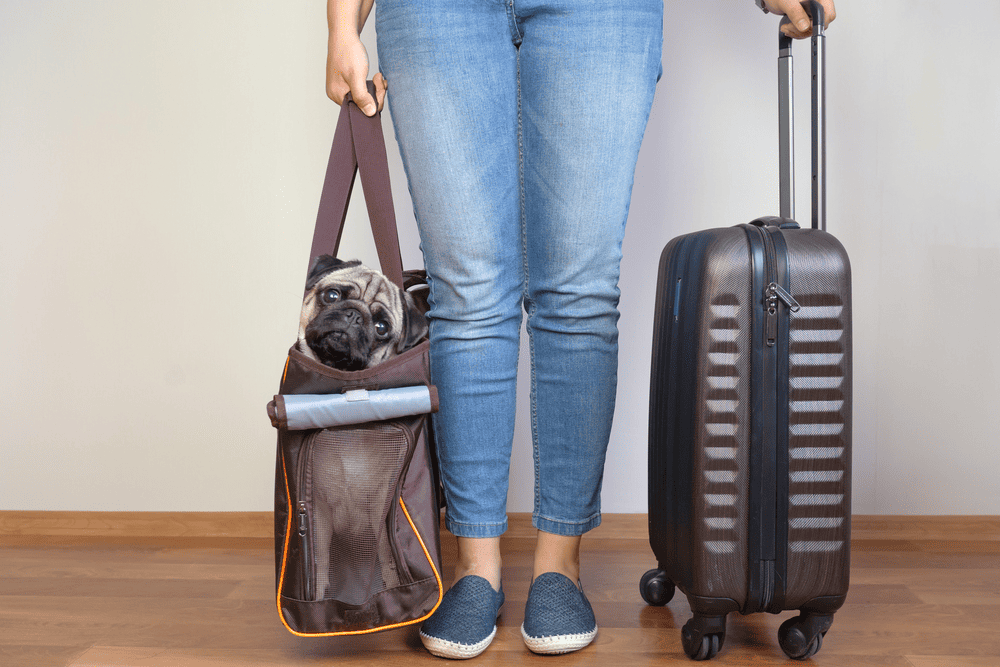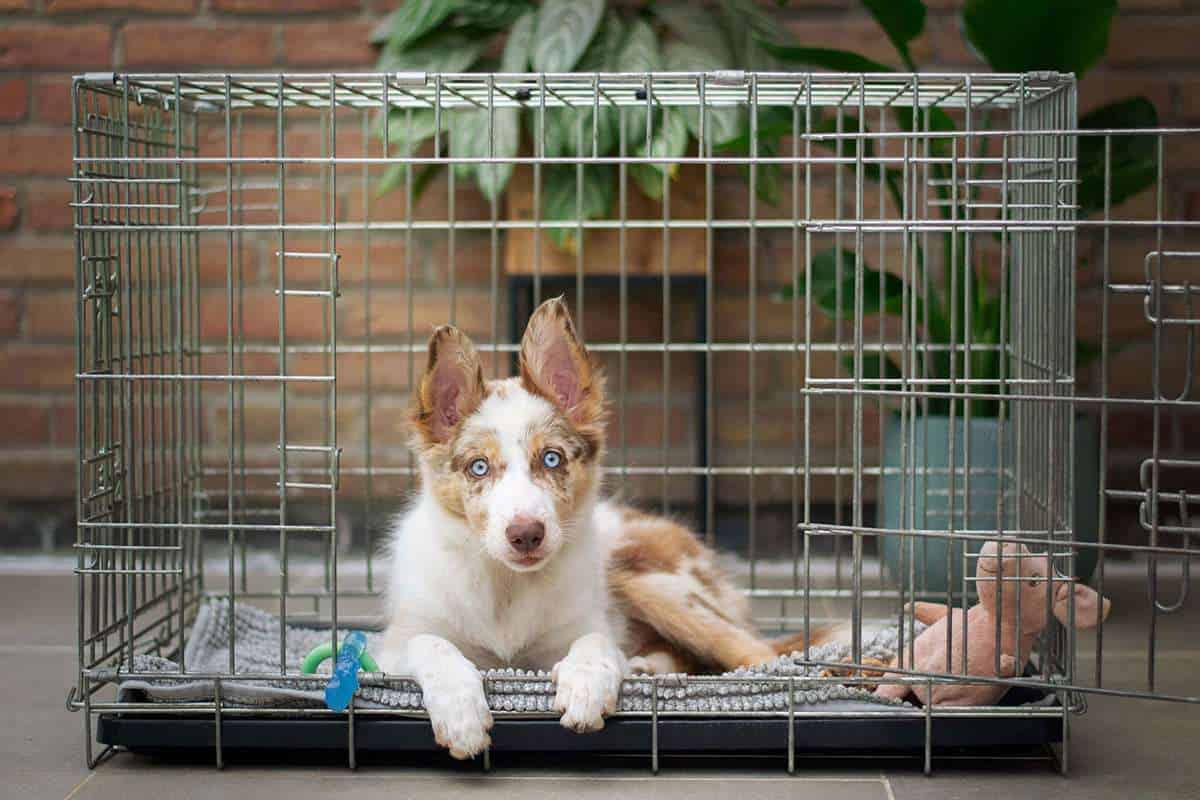Traveling with a dog can be a delightful experience. However, for some dogs the journey can be riddled with anxiety. It’s a condition that can make any trip, whether it’s a quick drive to the vet or a long-haul flight, a stressful experience for both you and your dog.
Dogs are creatures of habit. They thrive on routine and familiarity. So, when they’re put in a car or plane and their environment suddenly changes, it can cause them to feel anxious. But don’t worry, you’re not alone, and there are plenty of strategies to help manage your dog’s travel anxiety.
It might take some trial and error to find the best approach for your furry friend. But with patience, understanding, and a little bit of planning, you can help your dog overcome their travel anxiety and make any trip a more enjoyable experience for both of you. After all, adventures are always more fun when you have your best friend by your side!
Now that we’ve covered the basics, let’s delve deeper into the causes, symptoms, and treatments of travel anxiety in dogs.
Causes of Travel Anxiety in Dogs
Travel anxiety in dogs refers to the stress and fear a dog may experience when traveling. This anxiety can manifest in various ways and can be caused by a variety of factors, including past negative experiences with traveling, lack of exposure to traveling, motion sickness, fear of new environments, unfamiliar smells and sounds, and separation anxiety. Some dogs may have a genetic predisposition to anxiety, making them more prone to developing travel anxiety.
Dogs that have had negative experiences with traveling, such as being involved in a car accident or becoming nauseous during a previous car ride, may develop a fear or anxiety associated with traveling. Additionally, dogs that have not been exposed to traveling may become overwhelmed and anxious when placed in an unfamiliar environment. Motion sickness can also be a factor, causing dogs to feel physically uncomfortable and anxious while traveling.
Another common cause of travel anxiety in dogs is a fear of new environments. Dogs are creatures of habit and thrive on routine, so when they are suddenly taken out of their familiar surroundings, they may become anxious and stressed. This can be exacerbated by unfamiliar smells and sounds that may be present in a new environment.
Dogs with separation anxiety may exhibit travel anxiety when separated from their owner. They may become distressed and anxious when placed in a new environment, especially if they are not familiar with the people or surroundings. This can also be compounded by motion sickness or a fear of new environments, leading to a cycle of anxiety that is difficult to break without intervention.
Symptoms of Travel Anxiety in Dogs
Travel anxiety can manifest in a variety of ways and can range from mild to severe. Some of the most common symptoms of travel anxiety in dogs include:
Panting: One of the most noticeable symptoms of travel anxiety in dogs is panting. This can be heavy, rapid, and occur even when the dog is not exerting itself. Panting can indicate that the dog is experiencing stress and discomfort.
Shaking and trembling: Dogs may also shake and tremble when they are experiencing travel anxiety. This can be due to the stress hormones being released in the body, causing the dog to feel anxious and uncomfortable.
Whining or barking: Travel anxiety can also cause dogs to whine, bark, or howl excessively. This can be a sign that they are feeling overwhelmed or fearful.
Drooling: Dogs that are anxious may also drool excessively. This can be due to nausea or a nervous response to the stress.
Refusing to eat or drink: Some dogs may refuse to eat or drink when they are traveling. This can be due to motion sickness or anxiety, which can make them feel nauseous and uncomfortable.
Destructive behavior: Travel anxiety can also cause dogs to engage in destructive behavior, such as chewing or scratching at items in the car or hotel room. This can be a sign that they are feeling stressed and need an outlet for their anxiety.
Hiding: Some dogs may try to hide or escape when they are experiencing travel anxiety. This can be a sign that they are feeling overwhelmed and need a safe place to retreat.
Aggression: In some cases, travel anxiety can cause dogs to become aggressive. This can be a result of feeling threatened or fearful in unfamiliar surroundings.
It’s important to note that not all dogs will display all of these symptoms, and some may only exhibit a few. It’s important to observe your dog’s behavior and work with your veterinarian to determine if travel anxiety is the cause.
Factors Contributing to Travel Anxiety
Several elements can exacerbate a dog’s travel anxiety. Young puppies or elderly dogs might find traveling more stressful. Dogs with health issues, especially those related to the ears or balance, might also experience heightened anxiety. Some breeds are more prone to anxiety disorders than others. A dog that has had negative experiences associated with travel or confinement might develop travel anxiety. Furthermore, dogs not accustomed to car rides or unfamiliar environments can find traveling unsettling.
Treatment Options for Travel Anxiety in Dogs
There are several effective treatments for travel anxiety in dogs, and the best course of action will depend on the individual dog and the severity of their anxiety. Some possible treatments include:
Gradual Desensitization: This involves exposing the dog to the triggers of their anxiety in a gradual and controlled manner, in order to help them become more comfortable with these triggers over time. For travel anxiety, this might involve gradually exposing the dog to the car or crate used for travel in short sessions, with plenty of positive reinforcement and treats to make the experience more pleasant.
Gradual desensitization is a behavior modification technique that is often used to help dogs overcome various anxieties, including travel anxiety. This technique involves gradually exposing the dog to the stimulus that triggers their anxiety in a controlled and gradual manner until they become desensitized to it.
For example, if the sound of the car engine triggers the dog’s anxiety, the first step may be to simply play a recording of a car engine at a very low volume while the dog is in a relaxed and comfortable environment. Over time, the volume can be gradually increased as the dog becomes more comfortable and less reactive to the sound. Eventually, the dog can be exposed to the actual sound of the car engine while still in a controlled and comfortable environment, and then slowly introduced to short car rides, gradually increasing the length of the trip.
Counterconditioning: This involves pairing the triggers of the dog’s anxiety with something positive, such as treats or playtime, in order to help the dog learn to associate these triggers with positive experiences. For travel anxiety, this might involve giving the dog treats or toys that they enjoy only when they are in the car or crate, in order to help them associate these spaces with positive experiences.
Counterconditioning is a type of behavior modification technique that can be used to treat travel anxiety in dogs. It involves changing a dog’s emotional response to a particular stimulus (in this case, traveling) by pairing it with a positive experience.
For example, if the dog is afraid of getting into a car, the trainer might start by simply having the dog sit near the car and giving him treats and praise. As the dog becomes more comfortable with this step, the trainer will gradually move on to more challenging steps, such as having the dog approach the car, get in the car, and eventually take short rides.
Medication: In some cases, medication may be necessary to help alleviate a dog’s travel anxiety. This might include anti-anxiety medications, such as benzodiazepines or selective serotonin reuptake inhibitors (SSRIs), or medications to help with motion sickness.
There are several medications that can be used to treat travel anxiety in dogs. However, it’s important to note that medication should always be used under the guidance of a veterinarian. Common benzodiazepines used for dogs with travel anxiety include diazepam (Valium) and alprazolam (Xanax). Examples of SSRIs used for dogs include fluoxetine (Prozac) and sertraline (Zoloft).
Calming Aids: There are also several natural or over-the-counter calming aids that may help dogs with travel anxiety. These include supplements like melatonin or chamomile, as well as pheromone sprays or collars that can help to promote a sense of calm.
Calming aids can be a useful tool for managing travel anxiety in dogs. They are designed to help dogs feel more relaxed and less stressed during travel. Some common types of calming aids include pheromone products, natural remedies, prescription medication, calming clothing, and calming treats.
Training and Behavior Modification: In addition to the above treatments, working with a trainer or behaviorist can be very helpful for addressing travel anxiety. A professional can help to identify the specific triggers of the dog’s anxiety and develop a customized training plan to help the dog overcome their fear.
It’s worth noting that treating travel anxiety often requires a combination of these approaches, as well as patience and consistency from the dog’s owner. With the right treatment plan and plenty of positive reinforcement, however, many dogs with travel anxiety can learn to enjoy the experience of traveling and feel more comfortable and confident on the road.
While there is no guaranteed cure for travel anxiety in dogs, it is possible to manage and reduce the symptoms of travel anxiety through various interventions and treatments. By using a combination of behavior modification techniques, environmental enrichment, and medication, many dogs with travel anxiety are able to experience significant improvement in their symptoms and ability to tolerate travel.
Common Mistakes to Avoid When Traveling with an Anxious Dog
Traveling with an anxious dog can be challenging, and there are several common mistakes that pet owners should avoid to make the journey as comfortable as possible for their furry friend. Here are some of the most common mistakes to avoid:
Not preparing the dog in advance: It is essential to prepare the dog for the journey in advance. Gradual desensitization and counterconditioning techniques can help to reduce anxiety and make the dog feel more comfortable with the travel process.
Not using a carrier or crate: Carriers or crates provide a safe and secure space for the dog during travel. Not using a carrier or crate can make the dog feel more anxious and stressed.
Not checking with the airline or hotel: Different airlines and hotels have different rules and regulations when it comes to traveling with pets. It is crucial to check with the airline or hotel in advance to ensure that the dog is allowed and to understand any additional requirements.
Not providing enough exercise or mental stimulation: Dogs need exercise and mental stimulation to stay healthy and happy. Not getting enough exercise or mental stimulation before the journey can make the dog more anxious during the trip.
Feeding the dog a large meal before traveling: Feeding the dog a large meal before traveling can make the dog more likely to experience motion sickness, which can worsen anxiety.
Leaving the dog alone in the car: Leaving the dog alone in the car, even for a short period, can be dangerous and increase anxiety levels. It is crucial to take the dog with you or have someone watch the dog while you run errands.
By avoiding these common mistakes and taking steps to prepare the dog for the journey, pet owners can help reduce travel anxiety and make the experience more comfortable for their furry friend.
Preparing Your Dog for Travel
Preparing your dog for travel can significantly reduce their anxiety and make the journey more enjoyable for both of you. Here are some tips to help prepare your dog for travel:
Get your dog accustomed to the carrier or crate: If your dog will be traveling in a carrier or crate, help them get accustomed to it by placing it in a common area of your home and encouraging your dog to go inside. You can also leave treats or toys inside the carrier to create a positive association.
Gradually introduce your dog to car rides or airplane sounds: Start by taking your dog on short car rides around the block, gradually increasing the length of the trips. You can also play airplane sounds or videos to help your dog get used to the noises they will encounter during a flight.
Take your dog on a walk or play before the trip: Giving your dog some exercise before a car or plane ride can help them burn off some energy and reduce anxiety. Familiarize your dog with the destination: If possible, take your dog to the destination before the trip. This can help your dog become familiar with the environment and reduce anxiety.
Consider using calming aids: There are various calming aids available that can help reduce travel anxiety in dogs. These include pheromone sprays, calming collars, and natural supplements. Talk to your veterinarian: If your dog experiences severe travel anxiety, your veterinarian may be able to recommend medication to help ease their anxiety during the trip.
By taking these steps, you can help make car rides or plane trips a more positive experience for your dog.
Travel anxiety in dogs is a common issue that many pet owners face. However, with understanding, patience, and the right strategies, it’s possible to help your dog overcome their anxiety and make traveling a more enjoyable experience for both of you. Remember, every dog is unique, and what works for one may not work for another. It’s important to work closely with your veterinarian or a professional dog trainer to develop a personalized plan that suits your dog’s needs. Safe travels!
Conclusion
Traveling with dogs can be a delightful experience, but for some dogs, it can also be a source of anxiety. Recognizing and addressing this travel anxiety is essential for ensuring a smooth journey for both the dog and the owner. Here’s a summary of the major concepts discussed in the article:
- Understanding Travel Anxiety:
- Dogs are creatures of habit and thrive on routine. A sudden change, like traveling, can be unsettling for them.
- Past traumatic experiences related to travel, such as car sickness, or unfamiliar sounds and smells associated with transportation can trigger anxiety.
- Symptoms of Travel Anxiety:
- Common signs include excessive drooling, panting, shaking, whining, restlessness, pacing, escape attempts, vomiting, or accidents.
- Causes of Travel Anxiety:
- Past negative experiences, lack of exposure to traveling, motion sickness, fear of new environments, unfamiliar smells and sounds, and separation anxiety are some of the primary causes.
- Some dogs might have a genetic predisposition to anxiety, making them more susceptible.
- Motions sickness, causing the dog to feel physically ill
- Treatment Options:
- Behavioral Modification: Techniques like counterconditioning (changing the dog’s emotional response to travel) and desensitization (gradual exposure to travel triggers).
- Medication: Anti-anxiety medications or sedatives might be prescribed for severe cases. Always consult with a vet before starting any medication.
- Calming Aids: Natural or over-the-counter aids like melatonin, chamomile, pheromone sprays, or collars can help promote calmness.
- Training and Behavior Modification: Working with a professional can help identify triggers and develop a tailored training plan.
- Common Mistakes to Avoid:
- Not preparing the dog in advance, not using a carrier or crate, not checking with the airline or hotel, not providing enough exercise or mental stimulation before the trip, feeding a large meal before traveling, and leaving the dog alone in the car.
- Preparing Your Dog for Travel:
- Acclimatize your dog to the carrier or crate, introduce them to car rides or airplane sounds gradually, ensure they get exercise before the trip, familiarize them with the destination, and consider using calming aids.
While travel anxiety in dogs can be a challenge, with understanding, patience, and the right strategies, it can be managed effectively. Safe travels!
For further information on travelling with your dog, check out these sites:
- American Kennel Club (AKC): Traveling with Your Dog
- The Humane Society of the United States: Travel Safely with Your Pet by Car, Airplane, Ship or Train
- Pet Travel from the U.S. Department of Agriculture




Leave a Reply